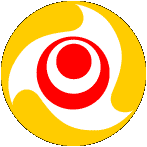THE KIAI
Many karateka ( karate students) believe that there is some unwritten law, perhaps handed down from masters of old, that they must kiai in kata and when performing techniques even in sparring. In some dojo ( training halls), if one is demonstrating a kata for testing and shouts at the "wrong" time, they might be penalized. This attitude, which exists in karate, tkd and other arts, demonstrates a shallow mentality that surrounds the traditional yell. Additionally, it creates a real gap in the karateka's understanding of his art. Closing that gap can improve this understanding quite a bit. A kiai is not simply a shout or a randomly voiced exclamation point to a technique. Rather, it is a coordination of physical power, mental commitment, and psychological volition blended together. It is a coordination of energies. This expression of kiai is of primary interest to karateka. The kiai can also be expressed while arranging flowers, making tea, writing, calligraphy or most occupations. If it is though of as being simply sort of a "yell" you will miss nearly all of it's value. Having established that a kiai is a harmonious blending of the energies, intent and will, we should understand that the most common way the kiai is expressed in the dojo is through vocalization. The sound of a kiai resonates from the diaphragm. In a mature karateka, the kiai has a fullness that can never be duplicated by the beginner, whose yell will be forced, high pitched and coming from his throat instead of his abdomen (hara). A good way to test your kiai is to listen when you blend it with others in the dojo. When it is properly done, you will hear only the sound of your own kiai, and no one else's. For most karateka refining the kiai will take at least 10 years.

